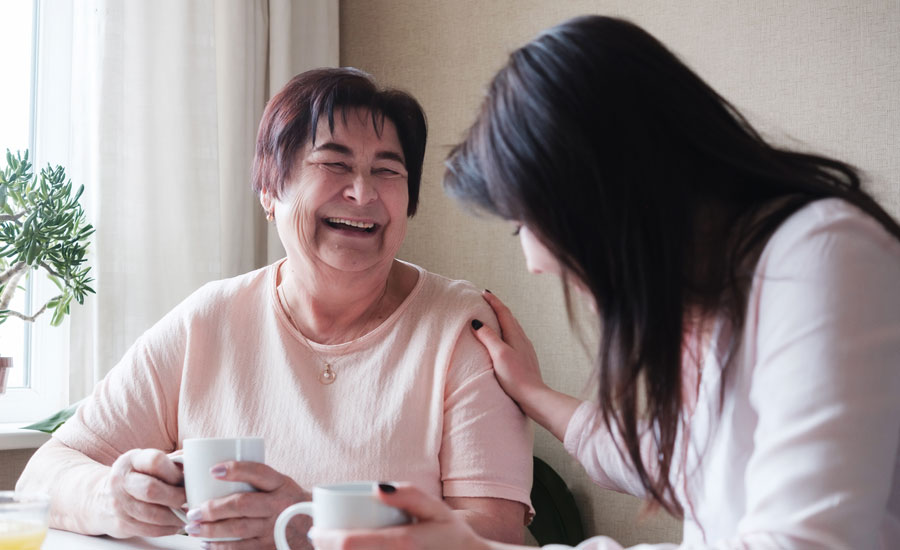How to Make the Transition to a Care Home Smooth and Worry-Free

Moving to a care home is a big step, but it doesn’t have to be overwhelming. While there may be some bumps along the way, with proper planning and a positive mindset, you can make sure the transition is smooth and worry-free. This guide will clearly outline what to expect and the key steps to help your loved one settle in comfortably and confidently.
What are the Steps to Transitioning to a Care Home?
There are many reasons why a loved one moves into a care home. Whether it’s their own choice, a family decision, a GP recommendation or after an incident or hospital stay, the shift from the family home to a care home setting can be incredibly challenging.
So, what are the steps to transitioning to a care home?
- Look into different care homes, considering location, services offered, staff qualifications and resident reviews. Understand the level of care your family member needs. For example, do they have dementia or need end-of-life care? Visit potential homes with your loved one to get a feel for the environment. Some homes offer trial stays where potential residents can stay for a few weeks to see if it’s a suitable home care facility for them.
- Keep your relative in the loop regardless of how much they’re aware of. Their input is crucial for making them feel comfortable and in control of the decision.
- Organise the logistics of moving day. This includes deciding what to pack and donate, arranging moving trucks and confirming the best time to arrive with the care home staff.
- Help your loved one sort through their belongings, keeping only the most meaningful and essential items. This process can be emotional, so take your time and be supportive.
- Bring personal items like photos, favourite blankets and cherished memories to make their new room feel more like home. Most care homes now let residents fully decorate their rooms – including repainting the walls!
- Communicate with the care home staff about your loved one’s medical needs, preferences and special dietary requirements to ensure a smooth transition. A good care home should visit your loved one prior to the move for an assessment to help them devise the best care plan for their needs.
- Be there in person on moving day. Your presence is likely important to your loved one. Offer reassurance and help them settle into their new surroundings.
- Work with the care home staff to help your loved one establish a new daily routine that feels comfortable and familiar. This should be easy as carers follow individual care plans to ensure your relative has everything they need to thrive.
- Support your loved one in getting involved in activities and meeting new people at the care home to help them adjust socially.
- Regular visits, phone calls, text messages or video chats will give your loved one confidence and maintain a strong connection, providing ongoing reliable support during the adjustment period.
Ready to explore...
Transitioning to a Care Home – What Happens on Moving Day?
While there are many steps to ensuring a smooth transition into a care home, moving day can be particularly overwhelming. Here’s what to expect and how to navigate the day:
Arriving at the Care Home
When you arrive at the care home, staff members will greet and guide you through the process. They’ll guide you to your loved one’s new room and offer assistance with unpacking and settling in. This is an excellent time to introduce your family member to key staff members and familiarise them with their new environment.
Settling Into the Room
Once you’re in the room, take your time setting things up. Unpack personal items like photos, hang up clothes and add personal touches to make the space feel cosy and familiar. If your relative is bringing their furniture, plan to ensure these arrive the same day. The carers will make any necessary adjustments to ensure the room feels like home. Keep in mind that this process is essential for helping your loved one feel more comfortable and less disoriented.
Meeting Other Residents
After settling in, the staff might introduce your loved one to other residents. This depends on how they feel, as moving day can be tiring and overwhelming. However, meeting new people will likely make your loved one feel more at ease and start forming connections right away.
Reviewing the Daily Routine
The care home staff will go over the new routines with you and your loved one. This includes meal times, activity schedules and any personal care arrangements. Knowing what to expect each day can provide a sense of structure and security for your loved one as they adjust to their new surroundings.
Handling Emotions
It’s normal for emotions to run high on a moving day. Your loved one might feel anxious, sad and be resistant to the change. Acknowledge these feelings accordingly and patiently reassure them. Remind them it’s okay to feel this way and that you’ll be there to support them through this transition.
Spending Quality Time
After settling in, stick around and spend some quality time with your loved one. Whether sharing a meal in the dining area, walking around the facility or just sitting together in their room, your presence can provide comfort and help ease any lingering anxieties.
Checking in with Staff
Before you leave, take a moment to check in with the care home staff. They may have additional questions or need more information about your relative’s preferences or needs. You will also have the opportunity to address any concerns you might have and ensure everything is in place for your loved one’s care.
Planning Your Next Visit
Schedule your next visit before you go. Letting your loved one know when you’ll be back can help ease feelings of separation and give them something to look forward to. If your loved one is particularly stressed and unsettled, call them later that evening and first thing the following morning to remind them they aren’t alone.
Explore our West Sussex care home…
Settling Into a New Chapter
Moving later in life is stressful, but knowing what to expect makes it easier. By helping your loved one settle in, staying connected and providing reassurance, your loved one can enjoy a worry-free transition into their new life in a care home.
Ready to explore...
